Repair Stories
Here, we’ve gathered a few voices from our customers who entrusted their beloved Lamino chairs to us for care and restoration.
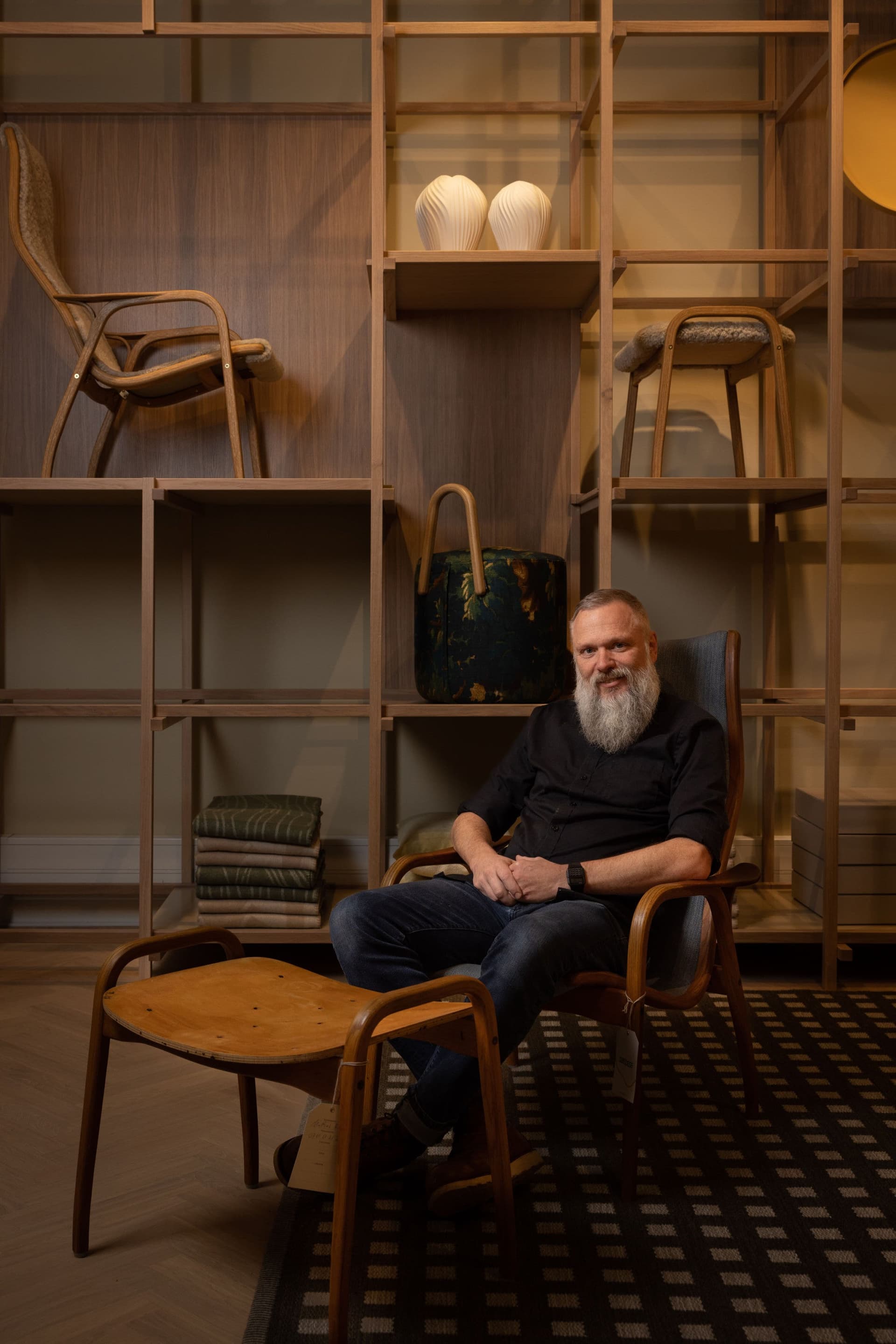
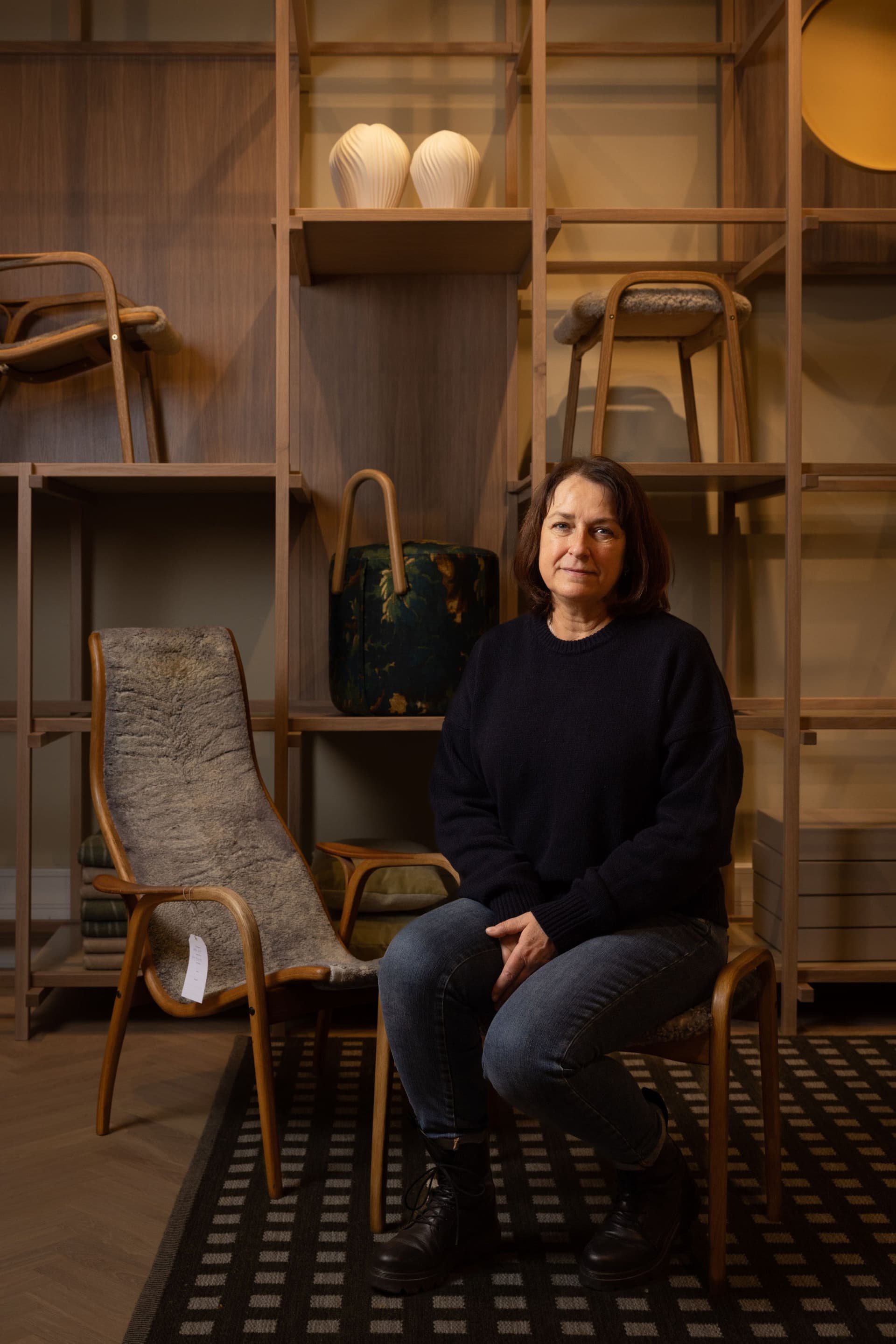
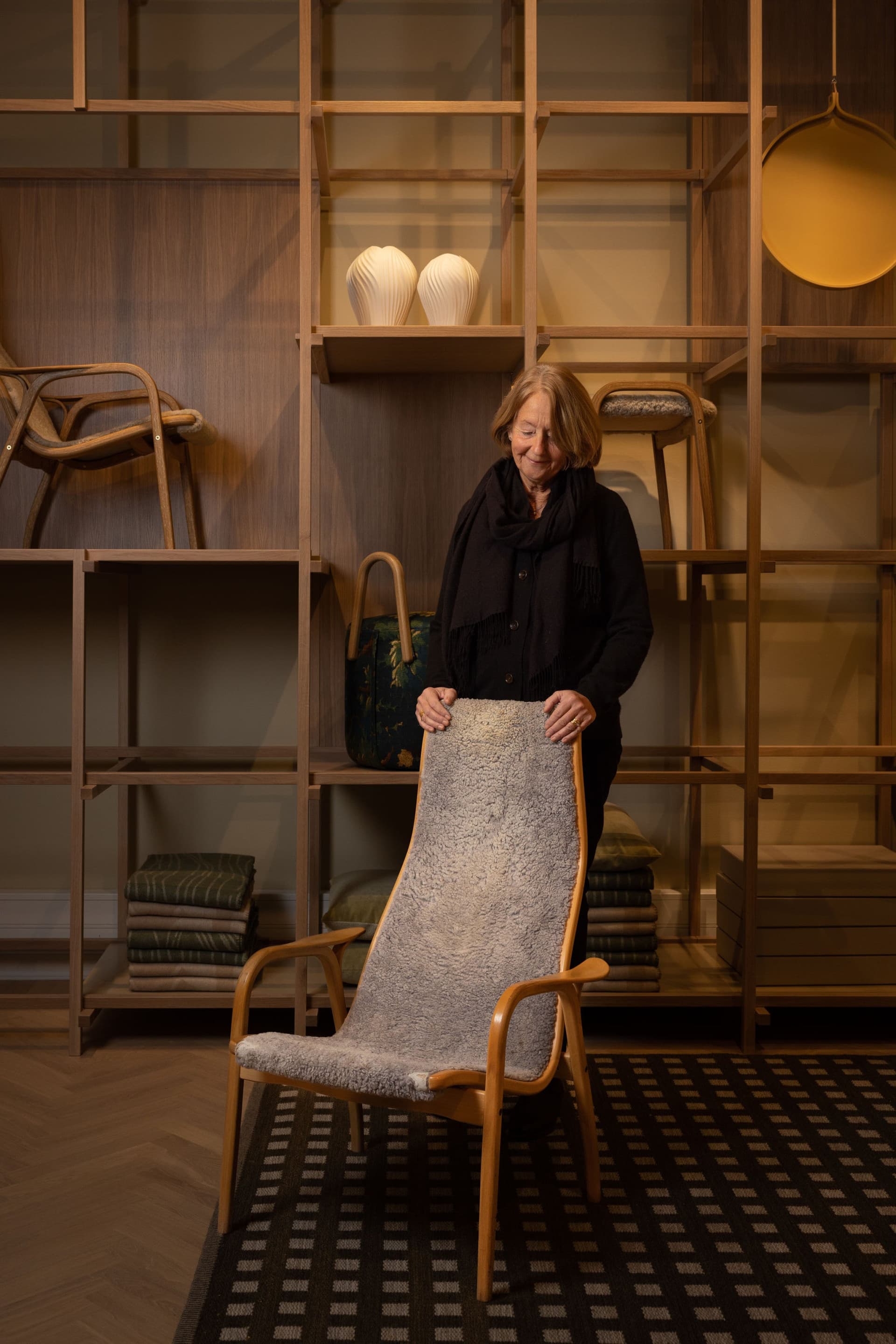


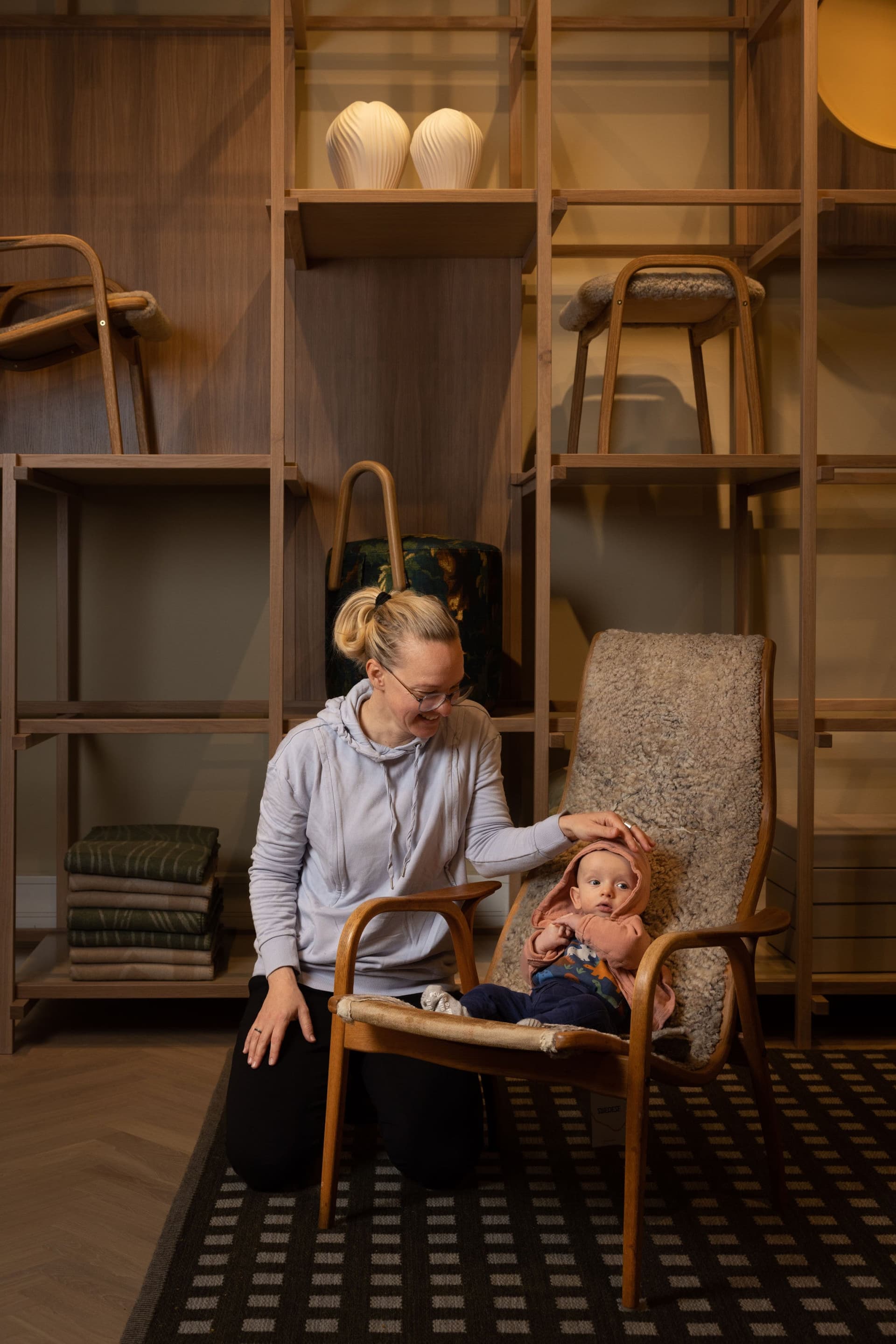
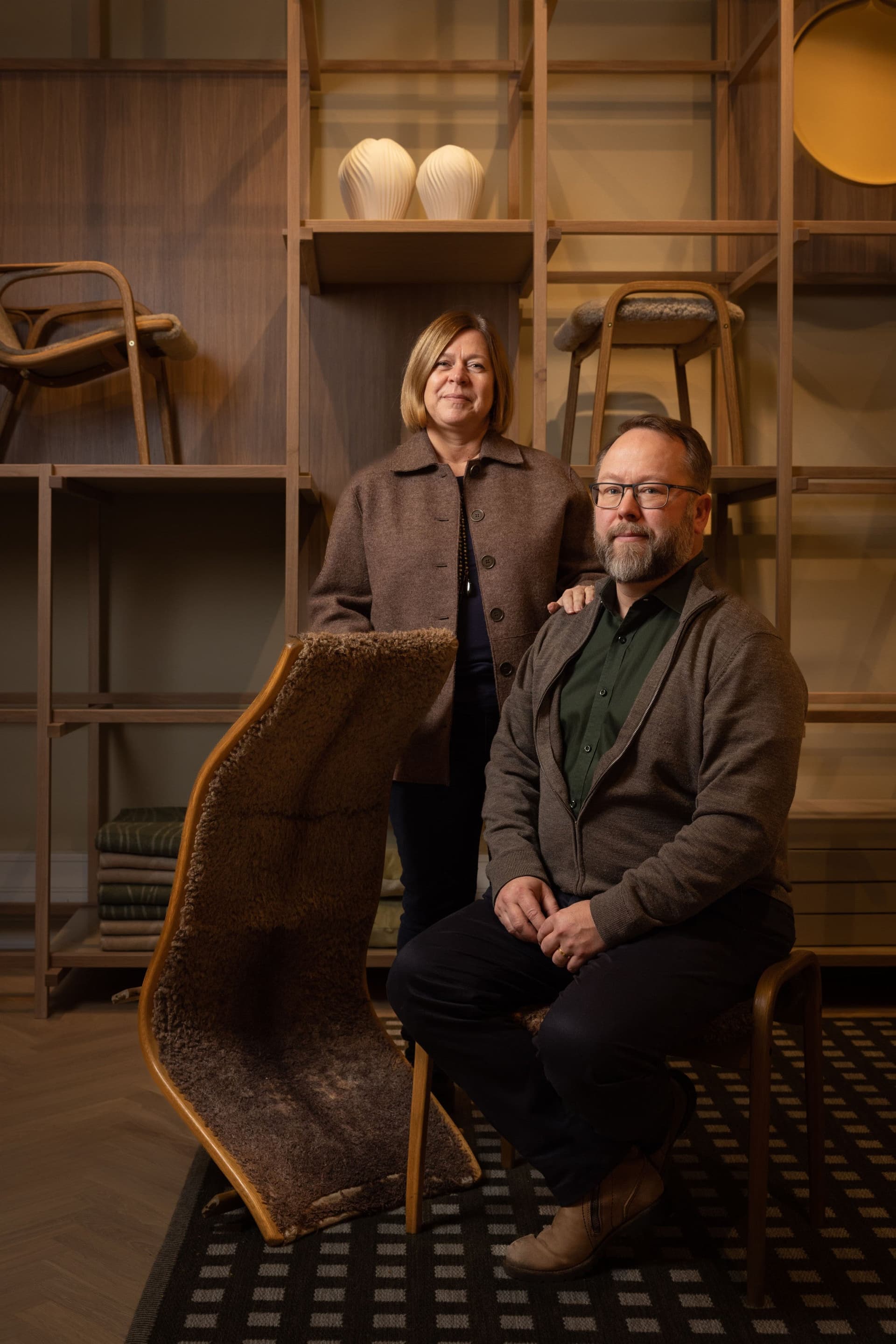
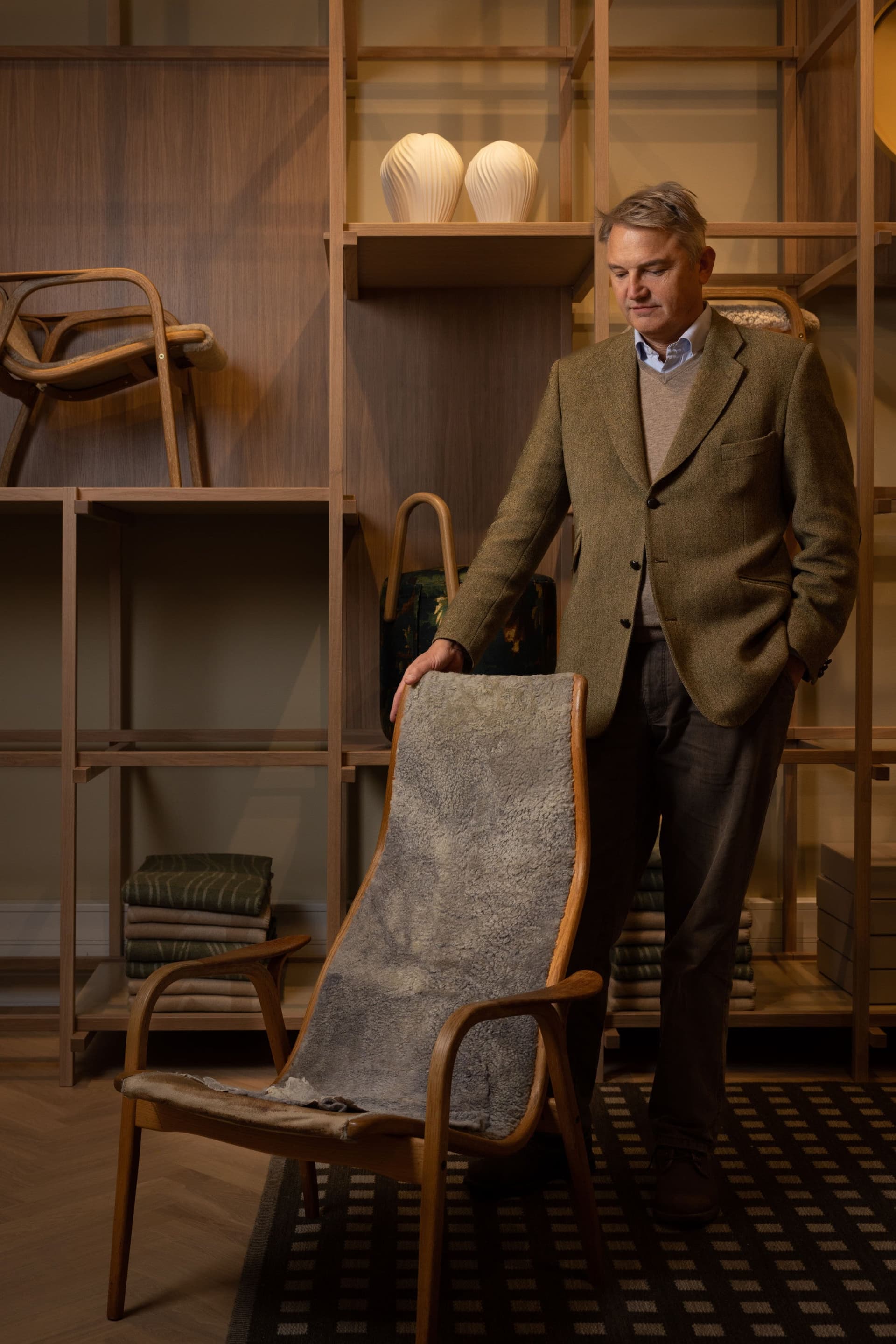
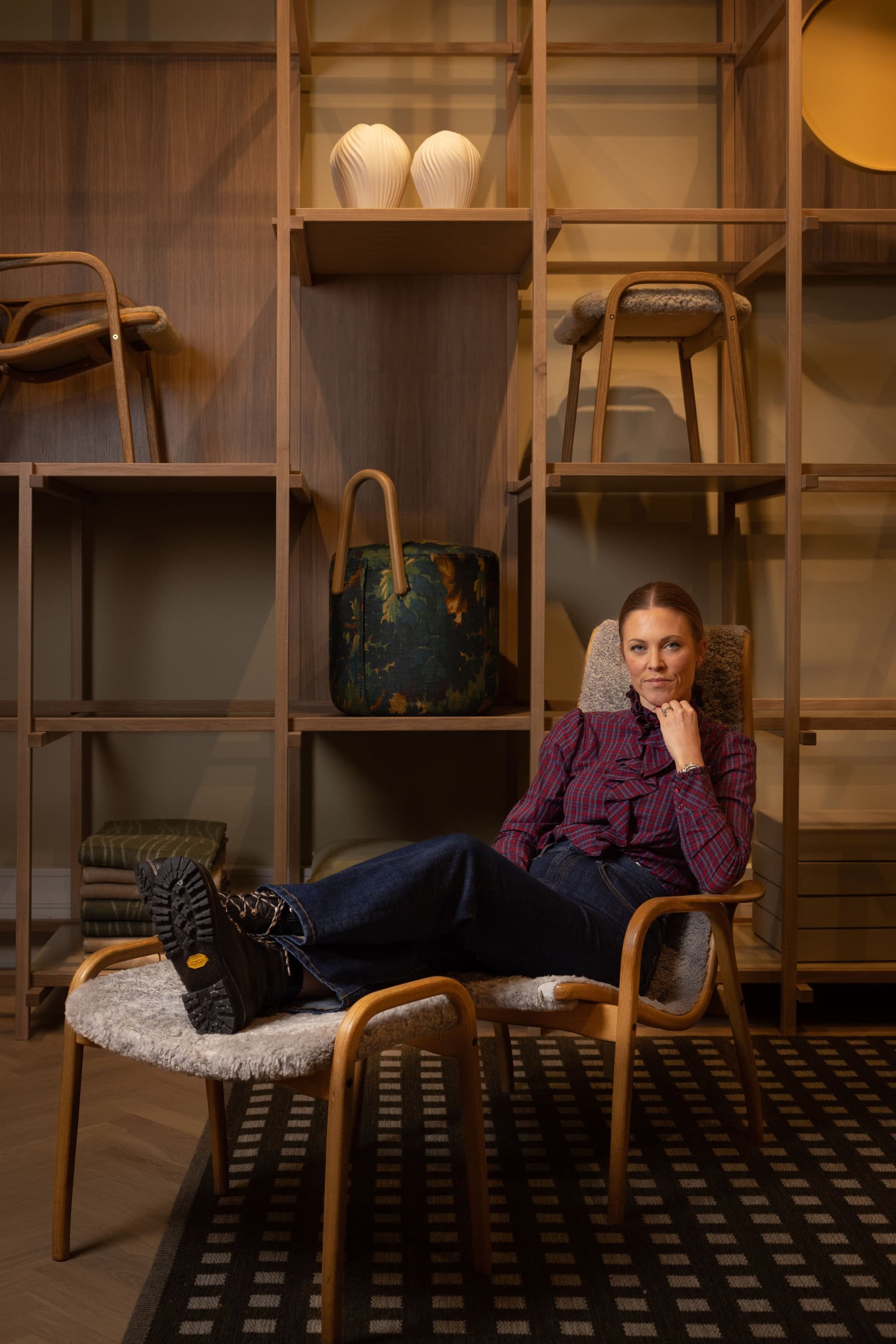
“Now I hope it lasts another 60 years.”
"I realize now that this chair has been a part of my entire life. It used to sit in my grandparents’ home, and I have vivid memories of Christmas Eves spent there. My grandfather always sat in the chair when it was time to hand out gifts after dinner."
So what does Lena love about the chair?
"It’s so comfortable to sit in. It’s also a piece that just belongs in Swedish homes. I love the classic Nordic design—it’s clean and beautiful in its simplicity, with no unnecessary embellishments."
The chair now sits in the corner of Lena’s apartment—her “reading nook.”
"It hasn’t been used much in recent years since the sheepskin started shedding and the frame creaked when I leaned back."
The chair will be reupholstered in the same light gray sheepskin it had originally.
"Now I hope it will last another 60 years. And I won’t have to cover it with a throw anymore. It deserves to stand proud in my two-room apartment."
Intensivvårdssjuksköterska
"It feels good to know it's being cared for in Småland"
Kerstin describes Lamino as “truly a family chair.”
“All of our children have one. Maybe they were inspired by ours.”
The chair and matching footstool were inherited by her husband Tomas from his uncle.
“I think we got it in 1987—we drove to Kumla, where his uncle had lived, to pick it up. It’s followed us through different homes, most recently to our apartment here in Stockholm.”
Now, the chair and footstool will be lovingly restored by skilled hands at the original factory in Vaggeryd, Småland. Instead of the classic gray sheepskin upholstery, they’ll be re-covered in light beige.
“It feels right that the chair and footstool are being taken care of where they were originally made. I really appreciate that the craftsmanship and knowledge still exist there.”
In their bright living room, the Lamino shares space with two green Malmsten armchairs, a linen sofa, and a KG Nilson table.
“It used to be our TV room, but we don’t have a TV anymore. Now it’s a reading room, and Lamino is our reading chair.”
What is it about Lamino that appeals to Kerstin and Tomas?
“It’s just so comfortable. Relaxing. Graceful and elegant. And it fits in anywhere.”
Tidigare socialchef, nu pensionär och roar sig med att vara förtroendevald politiker
"It’s like a Beatles song"
“I found it on a Swedish secondhand site. The seller was asking quite a bit for it, but I’d been looking for a Kurva for a couple of years—it was hard to find—so I didn’t hesitate.”
The Kurva, designed by Yngve Ekström in 1953 as the forerunner to Lamino, came home with Nicklas.
Why Kurva?
“There’s just something about the design, the shape. You can see it’s high-quality, thoughtfully made. Like with buildings or art, I’m drawn to good design.”
It’s also about the sense of craftsmanship, Nicklas explains.
“You can see and feel the handiwork. There’s a simplicity to it—and that’s what makes it beautiful. Just like a Beatles song.”
Nicklas and his wife are currently restoring a house from 1949 to reflect its original style.
“We’re getting rid of everything 1980s. The goal is to stay true to the house’s era, and that goes for the furniture too.”
The Kurva, soon reupholstered in new sheepskin, will sit proudly in a corner of the living room. The walls are covered in Stig Lindberg’s Poême d’Amour wallpaper, and nearby hangs another design icon: the Royal System shelf by Poul Cadovius.
Nicklas clearly has a love for 1940s–50s aesthetics.
“I’m really into what people jokingly call ‘grandpa style’,” he laughs. “I think I might be recreating my grandparents’ home. I’ll sit in the Kurva and listen to Chet Baker. Or to John, Paul, George, and Ringo.”
Head of artist relations och nybliven husägare
"Giving it a longer life feels just right"
The chair was in an antique shop on Nybrogatan in Stockholm, close to the Royal Dramatic Theatre.
“I just popped in—I wasn’t looking for anything in particular. It wasn’t a fancy shop, but they had cool stuff. The chair looked great, and I knew it was a quality piece.”
It was 1995. Mattias was studying at KTH and had just moved into a sublet in Aspudden. The chair was in poor shape, with cracks and worn upholstery, but he brought it home anyway. Since then, it’s followed him through every move, most recently to a 1970s townhouse in Sollentuna, where it mostly served as a clothes rack.
“It’s been in the bedroom corner for probably seven years. The padding in the footstool broke down long ago. I tried fixing it once but never finished, and the fabric for the stool went missing. I kept putting off repairs, thinking it would be expensive.”
Still, he had a soft spot for the chair.
“It’s just beautiful. Slim and incredibly light—you’re surprised when you lift it. And yet it’s built to last.”
Now it’s finally getting a new gray sheepskin cover.
“After, what, 30 years without one?” he says. “Giving it a longer life feels just right. If I’ve had it for 30 years already, I can have it for 30 more.”
Mattias is also curious as Swedese’s experts prepare to restore the chair.
“I’d love to know how old it is. There’s a mark under the armrest that says ‘59,’ but I’m not sure if that’s the manufacturing year.”
It-konsult
"I'm a chair nerd"
“When I saw the chair, I thought it would be perfect for nursing my baby. I haven’t dared sit in it yet because the fabric is so fragile, but soon. Once it’s reupholstered, it will go in the living room, next to a fireplace I plan to install.”
“I’m a chair nerd,” Elke says. “I collect different models for around the dining table—it’s an ongoing thing. There’ll be a Sibast dining chair, a Marcel Breuer, and a few others. I’m originally from Germany, and I grew up just five kilometers from the Bauhaus school in Dessau, so of course those designs are special to me.”
Elke first encountered Lamino in 2001 after moving to Gothenburg to study architecture at Chalmers.
“My classmate Susanne had one and loved it.”
This summer, Elke got her own Lamino.
“It was tucked away in a secondhand shop near Fridhemsplan. The price was low, but the chair definitely needed some love—including new upholstery. I thought I’d reupholster it myself, but then Edgar came along.”
As a healthcare architect, Elke designs environments for people in their most vulnerable moments.
“The spaces I draw have to support a sense of security.”
She sees a connection between furniture design and healthcare architecture.
Now her Lamino will get new upholstery in curly gray sheepskin—a natural material that brings warmth.
“One day, I’d like to design my own chair,” she says. “Hopefully before I retire.”
Vårdarkitekt och nybliven mamma till Edgar.
"We used to race to it"
For Tomas, the Lamino chair is a piece that has "always" been there.
“It’s almost exactly the same age as I am. It’s from December 1968, and I was born in June 1969.”
He remembers it sitting in the living room of the family home in Täby.
“My brothers and I would race to it to get the best seat. It was really popular.”
Later, when his father sold the house, the chair moved to the family’s summer house in Roslagen, which Tomas and Maria now own. The Lamino chair and an Alvar Aalto side table came with the house.
“Now they sit together in the living room, next to the fireplace. I love reading there.”
But the chair isn’t just for quiet reading—grandchild Filip, 2.5 years old, also enjoys it.
“It’s so soft and warm to the touch,” says Maria.
“And it’s a train track, too—Filip runs his Brio train along the curves of the chair.”
Tomas and Maria met later in life, and combining two homes meant making some choices.
“It made us reflect on what really matters, what holds sentimental value,” says Maria. “For me, it was some dishes, a couple of bowls, a teapot. And for Tomas, it was his things. Mixing and matching is fun.”
After much back and forth—gray or brown?—they’ve decided to keep the original color: brown sheepskin in the shade Sahara.
“We considered gray, but no—it should stay just the way it’s always been,” says Maria.
Revisionsassistent och revisor, farmor och bonusfarfar.
"We share a history"
“My father received the chair as a 50th birthday gift in 1965. A lovely present—probably from his colleagues. And I was born the same year, so it feels like we arrived together.”
The chair lived in his parents’ home in Bromma.
“It wasn’t a styled or curated space—my parents were very practical, with typical ’60s furniture. I remember my father often sitting in the chair. He was an engineer, intellectual, always reading.”
Now the chair belongs to Daniel. What does he love about it?
“The design, the shape—and how easy it is to move. It’s not like a heavy old armchair. And of course, there’s the emotional bond—we share a history.”
Eventually, the chair will move into the new house Daniel is building in the Stockholm archipelago. A house filled with light wood, where Lamino with its new gray upholstery will blend in beautifully.
“It’s actually the only piece of furniture we already know for sure will be coming with us.”
Daniel has plans for how he’ll enjoy the chair:
“I’m looking forward to sitting in it with a margarita in hand,” he says. A footstool, however, is not in the plans.
“The footstool feels a bit like a puppy. And this chair has never had a puppy.”
Ekonom och egen företagare med inriktning på förädling av bostäder och återskapande av gamla miljöer
"This is grandma"
“I remember the chair from my grandmother’s apartment in Växjö, Sweden. She worked as a nursing assistant and didn’t have much money, but she treated herself to the chair sometime in the ’70s. She had cable TV, which meant MTV—something we didn’t have at home—so visiting her was a real treat. I remember my dad often sitting in that chair.”
When her grandmother passed away, Josefine inherited the chair. What does she like about it?
“The sheepskin, the natural look. It softens everything else in the room. And there’s emotional softness in it, too.”
Things with a history are easy to love.
“The thought of someday passing it on to my own kids feels special. I appreciate the longevity—a sense of security, in a way. I’m so happy about the quality pieces I’ve been gifted or purchased that are still going strong. I didn’t think about that when I was 20.”
Delägare i ett bolag inom bostadsutveckling


